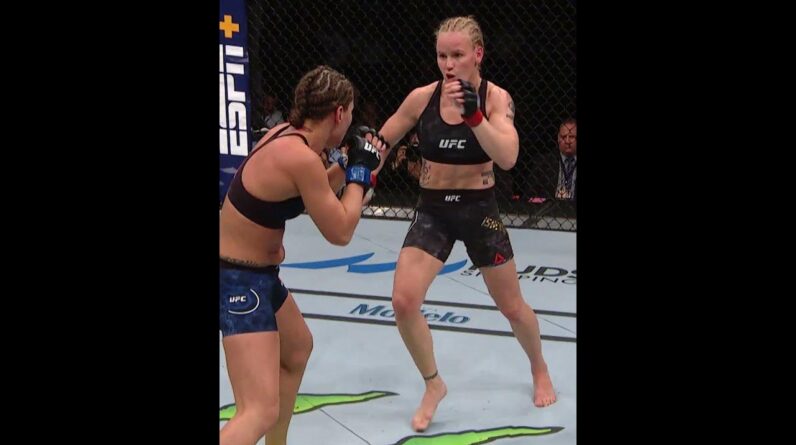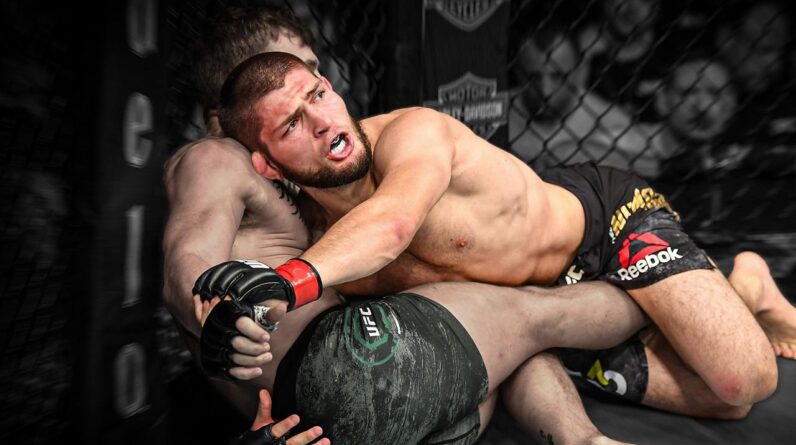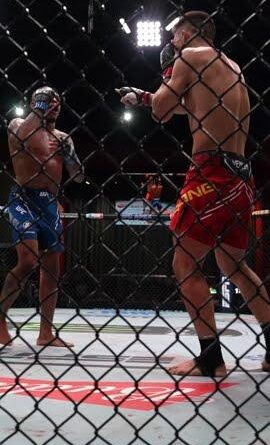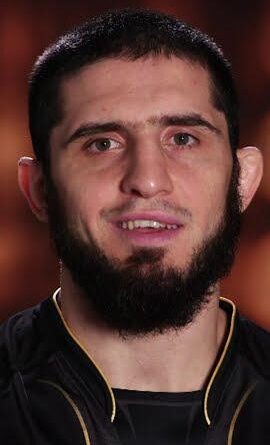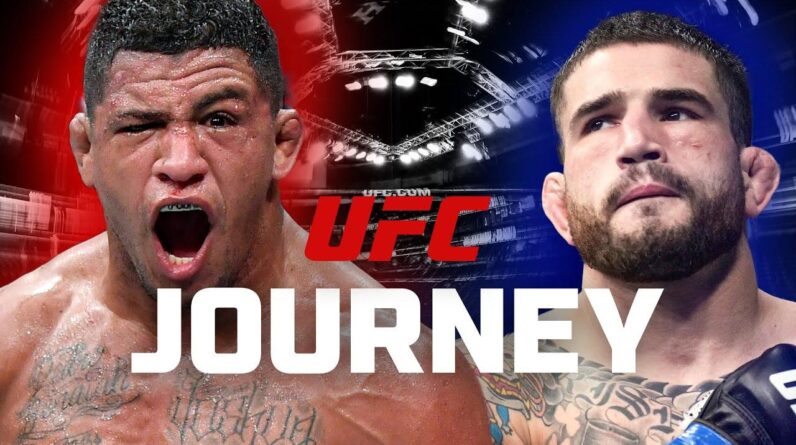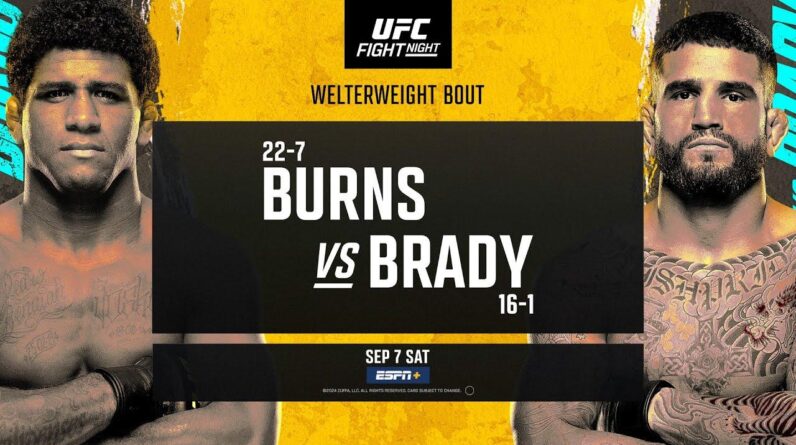[theme music] [dramatic music] >> John Gooden: At UFC 257, the combat sports leader
returns to Fight Island with an epic headliner. The biggest star in the sport,
"The Notorious" Conor McGregor, will rematch Dustin
"The Diamond" Poirier. Since his move to 155 pounds,
Dustin Poirier has built an enviable resume. >> Mike Goldberg: Dustin
Poirier with the finish! >> John: And after emerging
victorious and a 2020 candidate for fight of the year against
fellow contender, Dan Hooker, he'll be looking to solidify
his position at the top of the division, as the
number one contender. Standing in his way however,
is the returning, former lightweight world
champion, Conor McGregor. The biggest star in the sport
is back and better than ever.
And after making short work of
veteran Donald "Cowboy" Cerrone at UFC 246, he once
again has his sight set on the UFC lightweight title. >> Etch my name in
history one more time! >> John: Will the Diamond shine
on Fight Island, or will the notorious one reign
supreme once more? Hello and welcome along to
the very first edition of UFC Inside the Octagon
for the year 2021. John Gooden alongside Dan Hardy.
And, Dan, this is a big one. The combat sports leader has
launched into the year, 2021 and they've gone big style. Back to Fight Island! It's the return of the biggest
star in mixed martial arts, Conor McGregor! He's facing off with one of
the most popular fighters on the planet in Dustin Poirier. And of course, it's a rematch,
Poirier versus McGregor 2. What say you, Dan Hardy? [laughing] >> I'm very
excited, John Gooden. Fight Island 3, 2021 is here. We're kicking off with McGregor
and it's the fight that I wanted to see at 155, you know? The fact that this is six
years since the last time they faced one another.
Poirier has developed into
a very formidable 155'er. McGregor is still the
biggest star in this sport, coming back down into a rematch to try and
put himself into this division, a relevant position, now
that belt is floating around. I mean it's the fight everybody
wants to see in this division and the fact that we're
kicking off 2021 and the first pay-per-view with this– I
mean these ripples are going to continue on through the
rest of the year, no doubt. >> I love the fact that this was
sort of borne out of a charity challenge between the
two fighters as well. They both do great work in their
respective communities, so that adds something very nice
and very special as well. >> Alright, Dan, let's over to
the facts and the stats as we always do then. And we have the former
champ-champ, against the former interim champ
who has challenged for that undisputed title as well.
And starting at the very top
there, we have two fighters in their prime. McGregor is 32, Poirier is 31. But I wanted you to give us
some analysis on the size here, because they're the same height. The reach is an inch
in favor of McGregor. But the way he fights, is
that significant at all? >> Well I think, obviously it's
only an inch on a tape measure, but in a fighting style it makes
a huge difference, because you got to think how
McGregor utilizes that reach; you know he stands long,
he stands side on.
And when he's throwing that left
is what we've got into the past and we'll get into
again in this show. He fully extends that
left hand as far as he can. So he makes a lot of range up
with the length of his arms, just by purely utilizing
his reach to the best of his ability. Whereas on the flip side, you
got Poirier who– his punches tend to be short, he tends to
stand much closer, much squarer, throwing power punches. But you know, if we look at
this, that's why he's got the third highest striking rate
in UFC history, because his punches come in flurries.
He's not that one punch knockout
finisher like McGregor is. He wears people down,
it's a barrage of punches. And you know, as you can
see, it's effective; 10th most wins in UFC history. His style works over the
distance, especially into the championship rounds. So if I'm Poirier I'm
taking confidence in him and his fighting style, as long as he
can keep his mentality together facing McGregor. >> Let's take a walk
down memory lane shall we? September, 2014 seems
like a very different time, particularly when we
consider 2020 of course.
Um, 178, UFC 178– featherweight
division: Conor McGregor, Dustin Poirier. What went down? >> Okay well– I mean to be
honest, the fight kind of started at the face-off at
the press conference and every opportunity that McGregor had to
interact with Poirier before the actual fight started and
that's very typical of McGregor. You know, even Nate Diaz hinted
at it in that famous post-fight speech. He's like, "We don't want you
fight these guys that you've already beat at the
press conference." I kind of felt like that
from Poirier going in. And even in the face-off you
saw him reactive to McGregor. But straight away, you know,
McGregor comes out, he commands the space as he does with a
big wide frame, big long guard– spinning kicks to kind of
corral his opponent up against the fence. Like, there was a bit
a feeling out process.
But immediately you could
tell that McGregor was the one winning the
psychological battle here. You know, he was trading
shots, he was picking shots. But if you watch Poirier in this
circumstance here, he's moving away, he's backing up. He's allowing McGregor to push
him around the Octagon a little bit. And every time Poirier does step
in and you know, maybe he throws a low kick, he's not engaging. He's not throwing like
he's trying to damage. He's throwing like he's trying
to figure out what's going to come at him.
And it's much less about an
aggressive approach from Poirier and much more about dealing
with what he's up against. And right at this point when
McGregor lands the finishing shot– I'm just going to
pull that back a second. The most important thing, aside
from all the technical stuff, is the posture, the
look on Poirier's face. Because he to me, looks
uncomfortable here and as that shot comes over the top, it just
clips him across the side of the head. I mean it was a
very unusual punch. McGregor prefers his opponents,
skirting along the Octagon, so he can punch them into it,
across their face, across their chin.
Poirier was doing
the right things. I mean he was circling in the
direction that makes McGregor slightly more uncomfortable, but McGregor was still able to
land that left hand. But it just clipped him
across the top of the head. It was really odd punch, it
was almost like it took his equilibrium away. And as Poirier landed, the
hammer-fists that followed it was the thing that
really finished it off. You can definitely
see his legs go, but as he's landing he's
putting his hands down, so he wasn't completely
unconscious.
So the followup shots
were the one that did it. Now one thing I will say about
Poirier, is that in that first 60 to 90 seconds, you see in
his posture, he's quite tense. It seems to me a little bit like
when he steps in there, he needs like 90
seconds to kind of warm up and get used
to the fact that he's the back in the Octagon
and someone is throwing real life punches at him. Once he's past that point, he
starts to warm up and get into the fight a bit and he
quite enjoys himself. And that's when he gets very
dangerous, like stepping into range with confidence. But those first 90 seconds when
he's quite tense, I feel like it takes much less
power on a punch to hurt him, because he is so tense. And it just seem like that
punch stung him and took his legs away. That's what he's got to get
over this time around, is that 90 seconds is
crucial for him. >> Well for 90 seconds,
to a career built at 155.
Dustin Poirier went immediately
after that fight with McGregor, up a weight division to
lightweight and he's really established himself, Dan,
as one of the greats at 155. He's been involved in some
of the most epic fights the division has ever seen, some
of the best rounds I've ever seen as a fan of
mixed martial arts. And even some of those wins,
they've aged so well like Diego Ferreira and Eddie
Alvarez and the win against Justin Gaethje that you
were just talking about. He has turned into a very
accomplished force at the lightweight division. >> Dan: He has. If we draw a line under his
career as a featherweight and we look at what
he's done since he's moved up, what I would say, is he takes a punch better, he's
more durable, his conditioning is better, and he's not lost
that aggression that some people lose when they go up and
they're fighting bigger guys.
He's still getting in the pocket
with guys like Justin Gaethje and taking their best shots. You know, he's not trying to
style it and be the quicker fighter coming up
from featherweight. He's still brawling
like he's a big 155'er. So I honestly feel like this
expression of Dustin Poirier is the better version that we are
going to get, because 155 is the right weight class for
him at this moment, which is also
coupling him with the experience of
his career so far. I think that's what make
him such a formidable force. But it all comes
down to intelligence. The decision making has to be
on point in this fight, because that's the point of
difference between the two. McGregor is very clear what he's
trying to do and Poirier is very clear that he's going to try to
beat you to the punch every time and wear you down
before the final bell. >> So, Dan, on the other side
it's a slightly different story, because McGregor did stick with
145 pounds of course and he went on to capture that
belt emphatically.
Then after that, much like
he did with the Cage Warriors promotion, he wanted to go and
become a double champion again. He did that, but I guess the
theme is, he's always remained a developing mixed
martial artist. >> He has absolutely and I think
you know, what we saw after the Poirier fight, we saw the
stoppage from the left hand and then he went on to face
Siver and then Mendes and then Aldo. And all three of those fights,
he just further re-established how dangerous his left hand is. Obviously you know, he had a
couple of fights at 170, but then returned to 155, did
the same thing against Alvarez.
What's nice about all those
fights is the delivery of the left hand was– there's
similarities but there were slight differences as well. So it's not like there is only
one way you can land this punch. There are several
different ways he applies it. But then as we're moving
forward, we're seeing people expecting it now, so trying to
work around it, which had forced him to add different facets to
his game, as we saw in that last fight with Cowboy. You know the left hand missed,
straight into shoulder strikes, which was the end of the fight. Now I'm going to show
you this Cowboy fight. First of all, I got my favorite
camera angle, which is camera 7. This is the top camera
angle from above the Octagon. So, you get to really see not
only the layout of the fight and how it plays out, but also
how whoever is controlling the Octagon is doing it. Right. McGregor comes out and the first
thing he's going to do, as soon as he walks across, he prepares himself and
then he lunges into a real powerful left hand.
Now he's got excellent takedown
defense as we've seen and this was a real quick
reaction, because obviously Cowboy was level changed and
underneath before McGregor's left hand had been
fully released. But watch the way
he steps into this. Look how deep that
right foot steps. Now what I'm saying here, is
this back-foot is off the floor and all of his weight
is on this lead leg. And now you can see obviously,
Cowboy has leveled changed underneath, but punches
are going all the way over. So not only his weight off his
back leg, but all of his weight is now over his lead leg. John, I'm going to ask you to
remind me of that in a moment when we come onto the Poirier
play, because that's key. >> Noted. >> We know this is a
really dangerous weapon of his. There are certain things that he
has to do every time in order to land it with power. And there are certain things
that Poirier can do to kind of deconstruct that.
That's what I want you
to remind me on, John. Okay, so as this plays through,
he's throwing the punch over Cowboy's head,
Cowboy is level changing. You are going to see him swing
his left hand back to go for a cross-face and then he's going
to start moving himself away. The reason he's moving back, is
because he's trying to create space to get his head in
position, so he can have real estate to throw his
shoulder through. So there is the first
shoulder strike there.
He's got his head position in. He's got the overhook on
Cowboy's arm and he's throwing that shoulder strike in there. Now what we're going to see
as he backs up a little bit further, we can see Cowboy's
elbows extend out the back here. They're sticking out behind him. As McGregor goes to throw this
next shoulder, you are going to see Cowboy's elbow shoot
through, because McGregor has pulled it to hit him
with the shoulder. It's like pulling somebody
onto a knee with a Thai clinch. Very, very similar kind of
situation, so watch this. We got that pry, right in
between to keep a bit of space between the two, same reason
the head position is there, but there is the
shoulder strike.
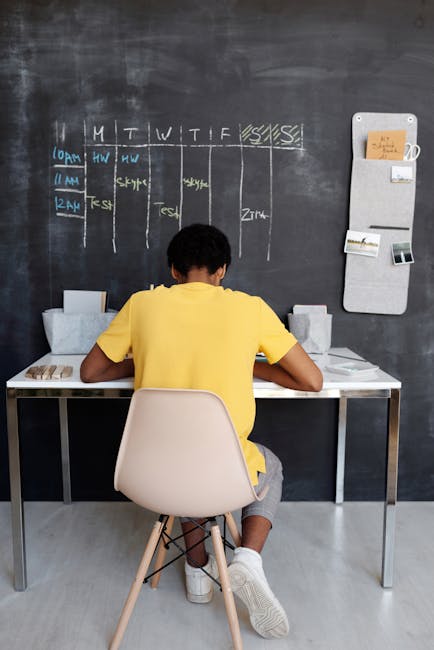
Bang. And then he puts his head back
into position to go for a second one and that's the one
that does the damage, because you see
Cowboy's posture breaks. And now Cowboy's is starting to
try to turn his head away, in which case, Conor uses this
opportunity to break and now he's back to controlling. Look at this, big stance
like he always does, like he does against everybody. Make himself look
as big as possible. Then he throws that nice lead
uppercut that he did against Holloway, just to keep
Cowboy moving back, force him against the fence. Now Cowboy does something that
McGregor is prompted by here. Cowboy throws a kick
and McGregor responds. So the kick from Cowboy,
response from McGregor, but then McGregor circles him
down and again as we spoke about in the Poirier fight and as we've seen in
the Brandao fight, the Siver fight, the Mendes
fight– he circles around to the side of the fence so he can
punch across them.
It's a very clear path that
McGregor's got to the delivery of his left hand. But watch this– he's going to
jump him with a knee, but he's going to land his
back foot placed. Now that knee is literally just
a segue to put him in a position where that left hand is
now coming right across Cowboy's head. That's the whole
point of that footwork. It's beautiful. But at this point, the truth is,
the fight was already done, you know? It was a consummate
performance from McGregor. It was a very powerful showing
and a very dominant showing. Can he do the same thing at 155? Will he look the same
going back down to 155? Because I'll tell you, John, we
stood next to him during that fight week and he
was heavily muscled. Like he's got thick
legs, thick back. That's a big question for
me doing down to 155 for this next one. But you now, if anyone is
going to push him at 155, it's Poirier.
>> Okay, Dan, we're going to
pause you for just a moment there, because it's
time to take a break. On the other side, we are going
to be talking much more about this incredible fight, UFC 257. And I have forgotten, Dan, you
mentioned a couple of things that you want me
to remind you for. All of that when we come back. [theme music] >> Welcome back to part
two of UFC Inside the Octagon, where we're talking about
the big main event at UFC 257: Poirier
versus McGregor 2. Now, Dan, we've covered the
careers up to today now for both of these fighters and how
they've gone from having that match at 145 pounds, all the way
through to this rematch at 155. And you've been telling me
to note a couple of things about McGregor. I'm now reminding you, but I'm
going to lean on the first 90 seconds, couple of
minutes of a Poirier fight. It's something he's identified
himself in interviews that he's perhaps a little bit
of a slow starter.
So going over to Dustin Poirier,
how does he mitigate that and also why did you want me to
remind you about this thing of McGregor? >> Um, well I think those first
90 seconds is kind of the time where Poirier kind of
finds his feet in the Octagon. He just looks a
little bit tense to me. And you know– and I know
we've discussed this, John– the interview where he talks
about being a slow starter, like he's acknowledged
it himself. If anyone is going to make you
freeze up and a bit tense in the first couple of minutes,
it's going to be McGregor, especially if he's
already got a win over you. So this is where Poirier's got
to really control his psychology when he gets in there. He's really got to be clear on
what he's trying to achieve in those first two rounds.
If I'm Dustin Poirier, I'm
thinking to myself, "Okay, McGregor's whole game is
built around his left hand." And I'm not discounting any
element of his left hand– of his game, but the left
hand is clearly the tip of the spearhead of everything
that he does. So my first point of call is to
be, A, be weary of that, and B, to try and
dismantle that in some way. Now the reason I was talking
about how heavy he's planting on his lead leg, is
because Dustin Poirier, when he's not trying
to get in a scrap, he's got quite
good footwork and low kicks. We don't see it very often,
because he only lasts 10 seconds in a fight.
But what would be valuable in
this fight, especially given the fact that you got two
southpaws facing each other. So that lead calf kick is
going to be very, very valuable for Poirier. He needs to set it with his
hands and he needs to be very intelligent about it, but also
not to be too concerned about engaging McGregor. Like, this was what Nate Diaz
did so well against McGregor, is he allowed McGregor to work,
but he allowed him to work because he defended. If he chops a low kick and moves
away, uses a bit of footwork, covers what McGregor is throwing
at him and keeps that pace going, slowly dismantling
that lead leg, he's going to affect everything
in McGregor's game. And anytime he can slow McGregor
down, it will also take some of that Octagon control
away from McGregor, which will take some of the
pressure off Poirier. You know, it's like a 10 point
game plan and he needs to make sure he goes through one,
two, and three, before he even starts
thinking about four.
But game plan number four, is
he's stepping into the breach with power punches, which he
just doesn't want to be doing in the first round or two. Like, dismantle that lead leg,
slow the left hand down, and take some of
the mobility away. Then he might even be able to
railroad McGregor into doing something he doesn't necessarily
want to do, which is clinch. Um, I think that would be the
smart thing for Dustin Poirier and I think that is one way he
can keep control of himself, just focus on low kicks and
footwork, and also he's putting water in the basement as Teddy
Atlas would say, which will pay off later in the rounds when he
starts putting his foot on the gas. >> This– I mean it obviously
begs the question, Dan, like you're talking about
the ten point plan. What is like four to 10? My thoughts that are coming to
me are, how he approached his last fight with Dan Hooker,
actually, where he did have a slightly slow start against
someone who has a reach, albeit not a southpaw and maybe
not as concussive power.
But he's having his most fun
when he's a pressure fighter. But remind us of how he
applies the pressure, Dan, and how he builds on that
pressure and ultimately comes away with brilliant victories. >> Okay, well he's had that
same characteristic all the way through his career. It's become slightly more
refined in the recent years and one thing that I will say,
is he's added a little bit more variety to the
angles of his punches.
Like those old WEC days, it
was bang, bang, bang, bang! And he's going uppercuts,
and then he's coming hooks and uppercuts. Now obviously you know with
the Justin Gaethje fight, we saw that knee come up
the center-line. You know, there's some
more variety to it, but the intention
is still the same. It's still overwhelmed
with volume. Like he's not a one punch
knockout fighter like McGregor. He doesn't put people down, but
often times it's because there has been a process of
wearing down before. What I like about what Poirier
does with his striking skills, especially once he's gone over
that 90 second hump, which seems to slow him down a
little bit and make him tense.
Once he gets into his rhythm and
he's stepping forward to– you know, into the pocket to land,
his defense gets better as well. He squares up, he
stands square to them. His feet are square. I mean you'll see clips where
he's standing on that little panel between the two
black lines in the Octagon. It's like he's snowboarding. He's standing right on that
spot, he's standing in front of his opponent. He's leaned into them and he's
throwing power punches one after the next, after the next. Those moments are
going to be really valuable. He just can't be doing that from
the first round and he can't be doing that like recklessly. Like he needs to apply that,
he needs to use that like a blowtorch.
Like you don't want to keep that
on all the time and burn the fuel-light, you need to put
it on when it needs a bit of heat and then take it away
and put it on when it needs a bit of heat and take it away
and apply it and build that up. That's the ten point plan. I mean, basically from four to
10, he's doing the same thing but with a little
bit more intensity.
But a little bit more intensity
but a lot more consciousness, so he's not running
onto that left hand. There are a lot of facets in
Poirier's game where he can cause McGregor problems;
striking and grappling. The psychology is the undoing
of his game, because he gets too excited or too nervous and then
he starts doing things that are uncharacteristic of him. And that's where McGregor looks
like such a professor, because he knows with clear
sight what exactly he's trying to achieve in there. But that maybe because his
game is focused entirely on that spear-point, which
is the left hand. >> I can't get UFC
snowboard out of my head, Dan. I thought that was a
very nice analogy. But he's going to have to swap
that for a sand-board, because of course he will be
fighting in the desert and it will be a little bit warmer
over there in Abu Dhabi. Moving along, Dan and I was
considering the grappling elements and you spoke about the
clinch there for a second and how this might play out.
Then I sort of slapped myself
and "Get a grip of yourself, John. Don't even be thinking about how
this one might get into those sorts of ranges." But actually when you go back
through the catalog of fights for both of these fighters
and their opponents and what's happened– Hooker, someone
who is a notable striker in the division, he decided to
try and grapple with Dustin Poirier, due to the pressure
that he put on him. And of course we got to go back
to that first Diaz for McGregor, where he forced the
shot out of him as well.
So it might well happen and if
it indeed does happen, Dan, what might we see from
these fighters? >> You're exactly right, John
and I'm going to go back just a tiny bit further to that quick
turnaround inside the Octagon, we have to do on the side of
Thames when McGregor, Nate Diaz was made. >> Very cold. >> And if you remember in that
breakdown as we were discussing, I said the Diaz
brothers don't have wrestling. They have pressure, which
forces you to wrestle into their jiu-jitsu game. It's pretty much the same
thing here with Poirier.
Now I know Poirier can wrestle
and he will wrestle if he needs to, but he's going to
be far more reactive. Like I do feel if there is
grappling in that one, it's going to be much more,
because Poirier has managed to turn the tide a little bit. Maybe third round, early 4th
round he's starting to put pressure on and now we're
starting to see level changes from McGregor. I think McGregor's grappling to
improve just purely because of the fact that he was
preparing for Khabib, because he knows that everybody wants
to ground him to avoid that left hand.
So in the year that we have not
seen McGregor and all the time before that, I would imagine
that his grappling game has improved several levels,
that we have not even had the opportunity to see. I even go back to the Holloway
fight when he injured his knee down at 145. And his takedowns were
beautiful, we got what– three, four different
takedowns in that fight. Lovely top control, really
mean shoulder pressure as well. He knows exactly what he's
doing when it hits the ground. I just don't think it's his
first option and I don't think it's an option he chooses
unless he doesn't feel like he has many others. So that's what I expect. I mean, I think McGregor
will level change if he's under pressure, or if he's hurt,
if that lead leg is taking a beating and you know,
he's starting to struggle.
He might start to look to
wrestle and then that's when we start to see Dustin Poirier and
the old submission skills that we have not seen
too much anymore. You go back to his early
featherweight days and he was a D'arce choke killer. The Jonathan Brookins one, the
first one that jumps into my brain, because he's got Brookins
backed up against the fence and he's pouring pressure on him
and Brookins level changes straight into a D'arce. So I think that D'arce choke
from Poirier or a few other submissions which I'm sure he
feels like he's got in his back pocket, they might be very
useful if McGregor starts to fatigue and
decides to wrestle. >> Can't wait to
see it, my friend. Listen, thank you very much
for all your thoughts and your analysis. That is us done for this
Inside the Octagon, for this epic UFC 257. It's the return to Fight Island. It's a rematch. It's massive. We hope you enjoy the fights. Keep the conversation going,
using the hashtag, Inside the Octagon. Tweet @UFCEurope. And we will see you next time.
[theme music].


